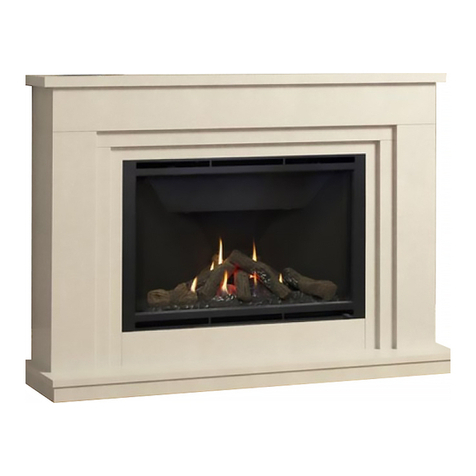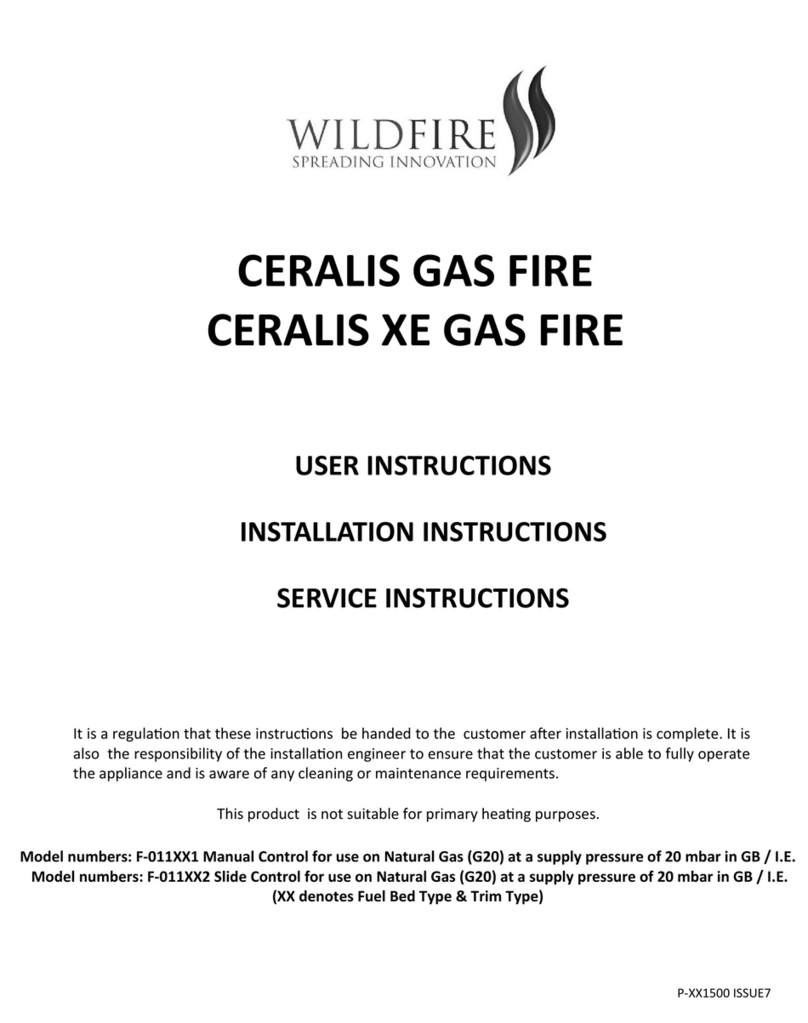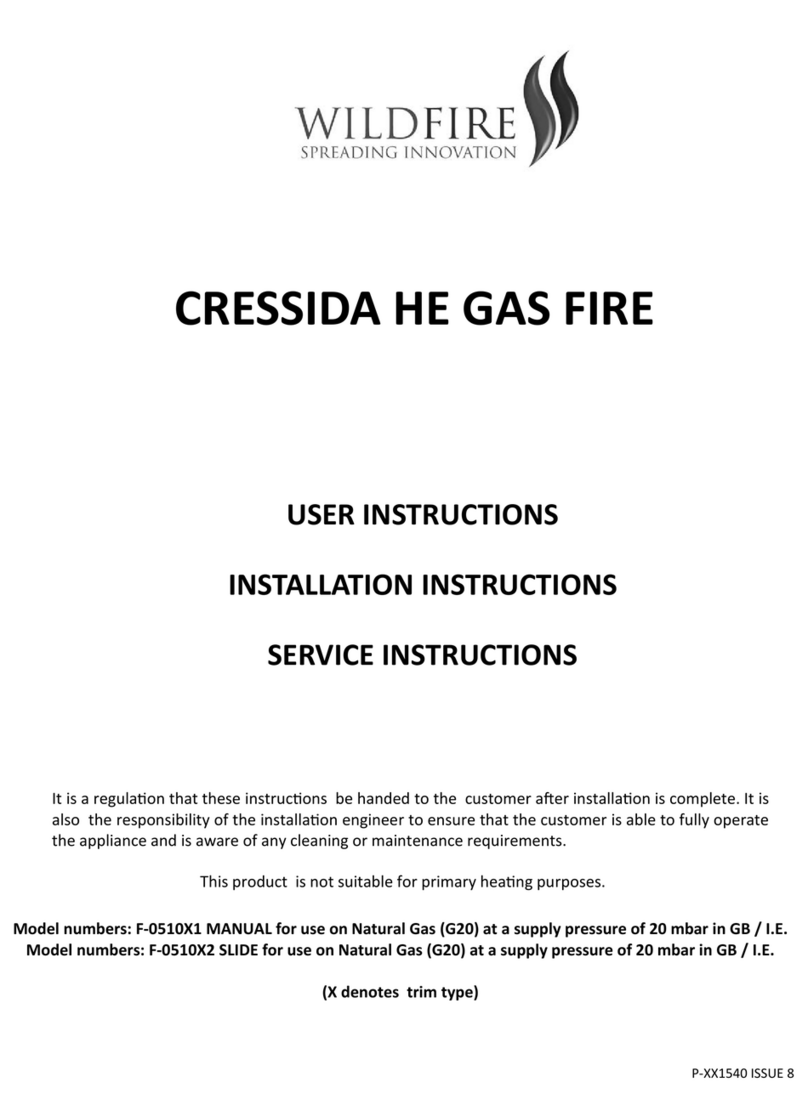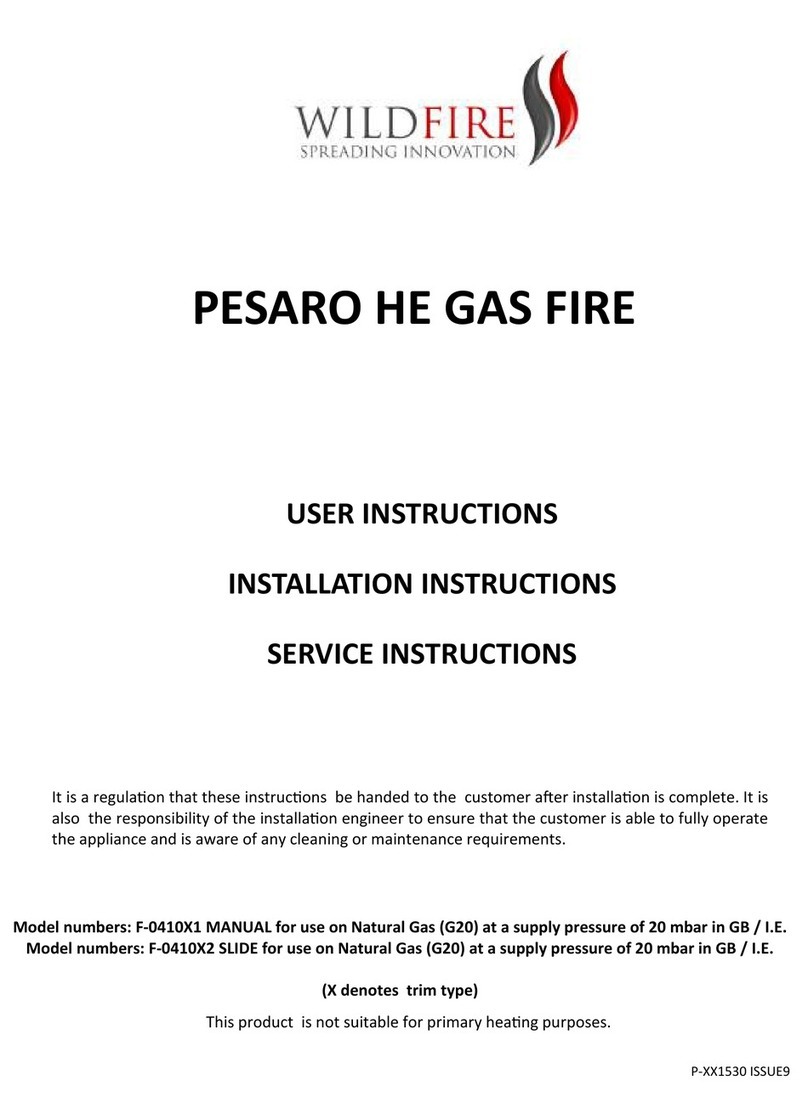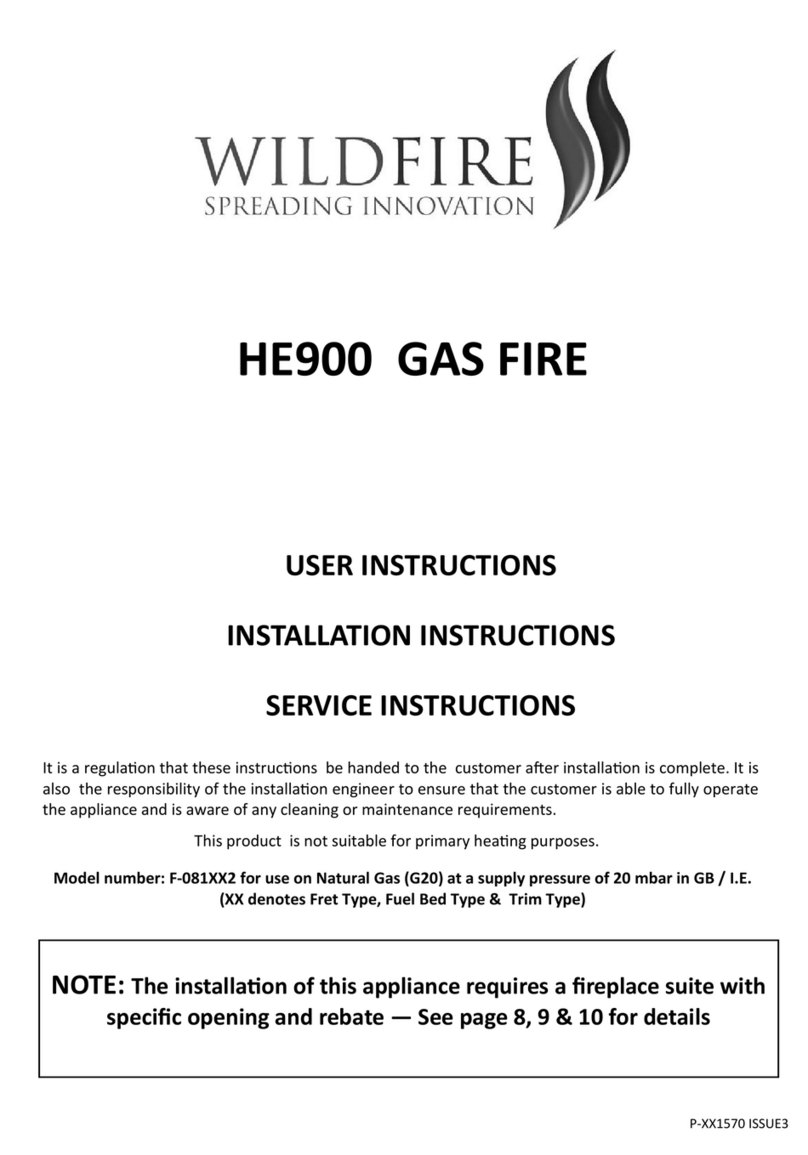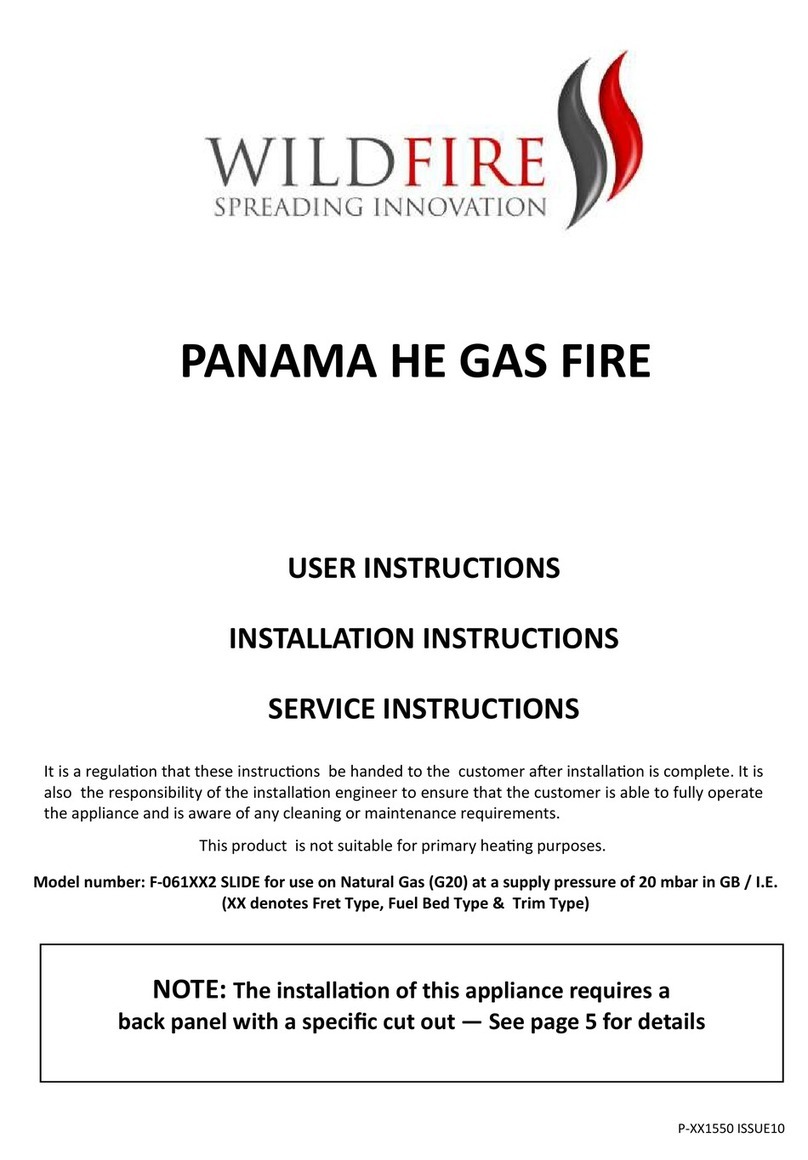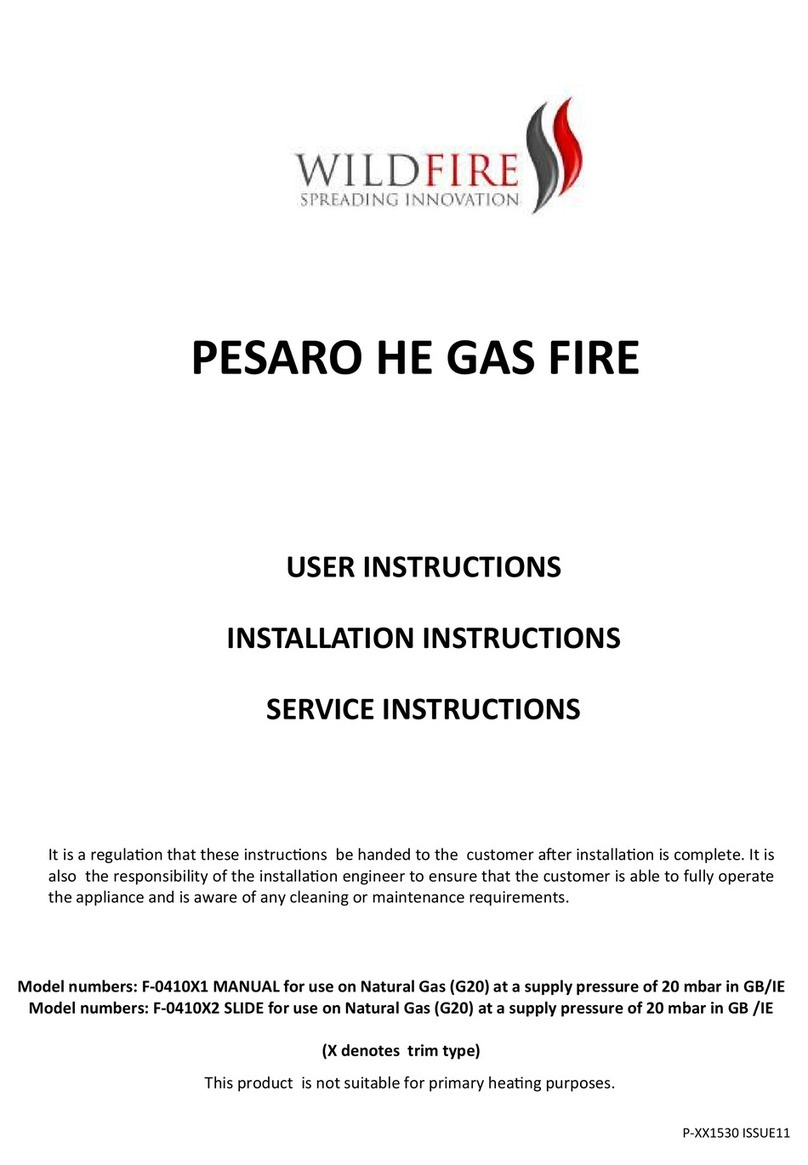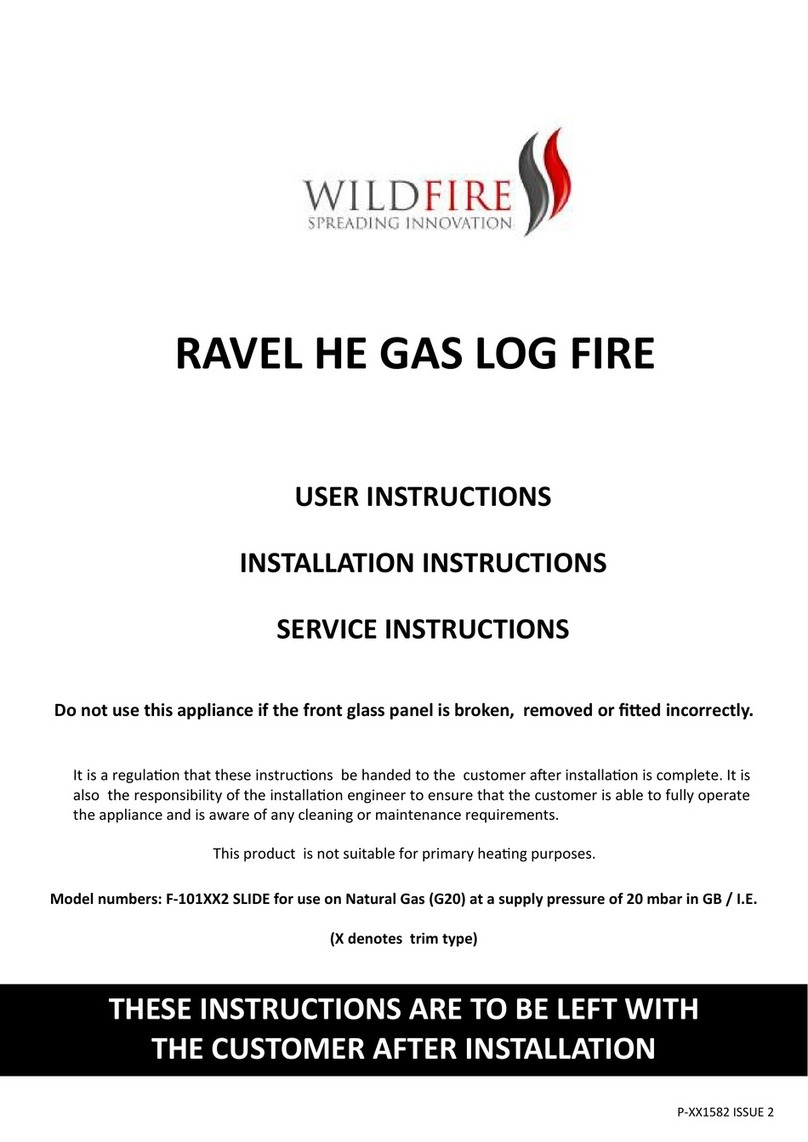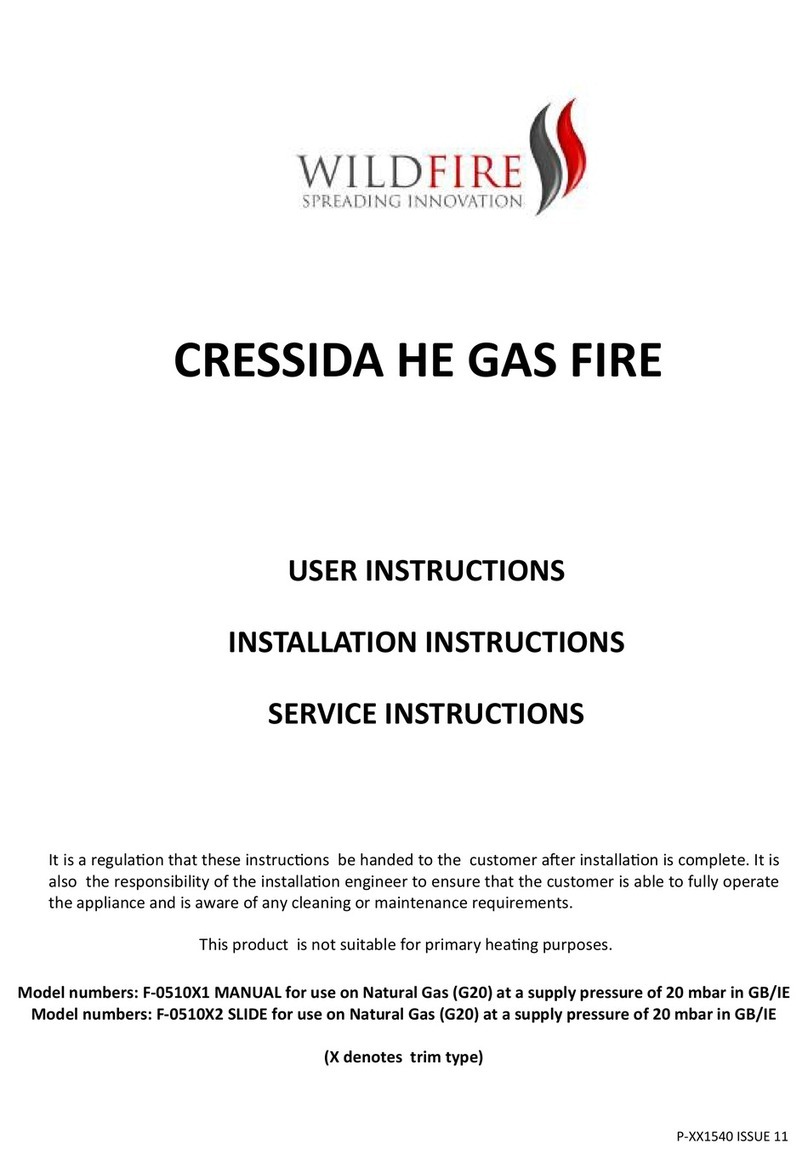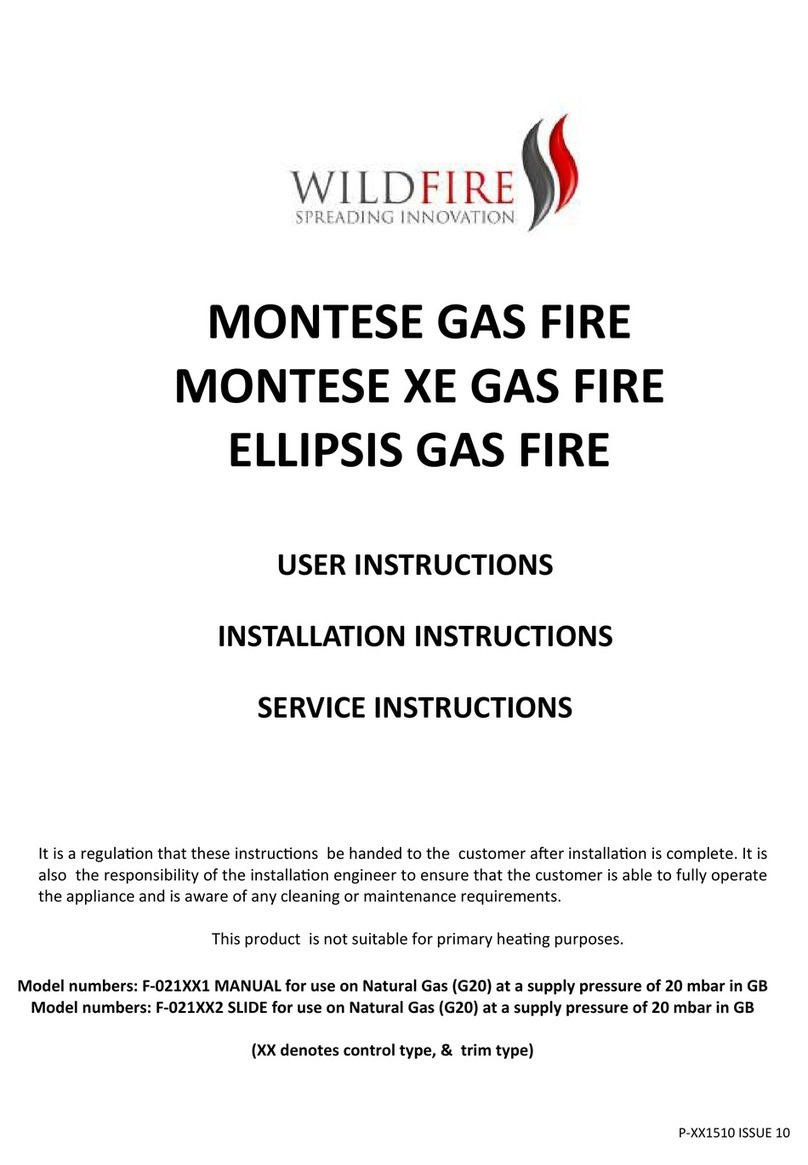6
Installaon into a PRE-CAST FLUE Installaon—connued…
If a dimension of 125mm cannot be achieved to provide such debris collecon then the re surround can be packed
away from the wall—ensuring that that a suitable non combusble material is used and the integrity of the replace
opening is maintained. If this procedure is undertaken then it is important to ensure that the correct mantel rebate
is selected to provide for this new re surround posion. Under no circumstances should the appliance be installed
if the 125mm minimum dimension cannot be achieved.
The installer should always inspect the ue way prior to installaon of the appliance and in the case of pre-cast ues
it is important to check that the ue way is clear and free from mortar or other sealant which may have been
extruded into the passage during its’ construcon. If this is the case then these should be removed by rodding the
ue prior to installaon.
See the other important notes regarding pre-cast ues on page 3.
Fireplace Opening (Hole in the Wall Installaon)
This appliance MUST be installed in accordance with all relevant secons of document ‘J’ of the building regulaons.
This appliance may be installed such that the base of the appliance sit on the surface of a replace opening at least
110mm up from the oor—this dimension ensures that there is no incandescent material (ame or ceramic
impinged by ame) is less than 225mm from the oor.—This is a requirement of document ‘J’.
Where a hole in the wall installaon is employed it is important that the fret to the appliance is either integral with
the trim, is xed to the appliance securely or a small hearth surface is constructed at the base of the opening for the
fret to sit upon. If such a hearth is constructed it must be a minimum of 480mm in width and 100mm deep.
It is always important to ensure that the appliance is xed securely to the replace opening and that no movement
of the ceramics takes place when the appliance is operated. It is addionally important in a ‘hole in the wall’
installaon to ensure loose ceramics cannot fall from the appliance. In addion it is imperave that ONLY fascia/trim
arrangements supplied by Hearth Products deemed suitable to be used with Hearth Products appliances in a ‘hole in
the wall’ installaon shall be used.
THE INSTALLER MUST INFORM THE USER OF THE FOLLOWING IMPORTANT NOTICES AFTER A HOLE IN THE WALL
INSTALLATION HAS BEEN UNDERTAKEN.
1. The user must be made aware to t a secure reguard where the room is used by elderly, inrm, infants or
young children.
2. The user must be made aware to keep the area immediately in front of the appliance must always be kept clear
of combusbles items. This does not include the oor covering however such covering should be xed.
3. The user must ensure that the ceramic fuel bed is maintained in the correct condion of installaon, especially
aer cleaning. If the fuel bed is removed for cleaning or maintenance the ceramics should be checked for
secure placing and tested for movement during appliance operaon.
4. The user must ensure that other occupants of the room where the appliance is installed are noed to not get
unnecessarily close to the appliance when in use or to posion any furniture or appliances too close to the re.
Checking the Flue
Use a smoke pellet prior to the appliance installaon to ensure the viability of the ue and check that the smoke can
be seen being emied from the terminal / chimney pot outside. There must be no leakage of smoke through the
structure of the chimney/ue during or aer the smoke pellet test and it is important to check inside upstairs rooms
adjacent to the chimney/ue. If the installaon is into a pre-cast ue ensure check the lo space to ensure that the
connecon between the pre-cast block and the uepipe is sound. Check the chimney pot / terminal and general
condion of the brickwork or masonry. If the chimney or ue is in poor condion or if there is no up-draught do not
proceed with the installaon. If there is a history of down-draught condions with the chimney / ue, the
installaon of a tested and cercated ue terminal or cowl suitable for the relevant ue type should be considered.
A spillage test must be performed—see page 4 of these instrucons.


